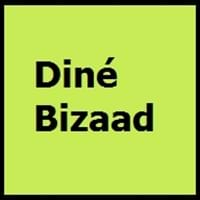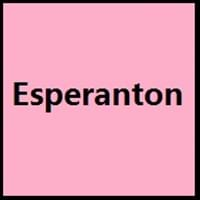Navajo and Esperanto
Countries
United States of America
East Asia, European Union, South America
National Language
United States of America
East Asia, European Union
Second Language
Not spoken in any of the countries
Central Europe, East Asia, Eastern Europe, South America
Speaking Continents
North America
Asia, Europe, South America
Minority Language
Not spoken in any of the countries
Not spoken in any of the countries
Regulated By
Not Available
Akademio de Esperanto
Interesting Facts
- Navajo language is tonal language, as it heavily relies on pitch to distinguish between similar words.
- Navajo ethinc group is 2nd largest Native American group.
- The most widely spoken constructed language in the world is Esperanto.
- Esperanto is an artificial international language.
Similar To
Apache Language
Not Available
Derived From
Not Available
Not Available
Alphabets in
Navajo-Alphabets.jpg#200
Esperanto-Alphabets.jpg#200
Writing Direction
Not Available
Not Available
How Are You?
Ąąʼ haʼíí baa naniná?
Kiel vi sanas?
Good Night
Yá'át'ééh hiiłchi'į'
Bonan nokton
Good Evening
Yá'át'ééh ałní'íní
Bonan vesperon
Good Afternoon
Yá'át'ééh
Bonan posttagmezon
Good Morning
Yá'át'ééh abíní
Bonan matenon
Please
T'aa shoodi
Mi petas
Sorry
Not available
Mi bedaŭras!
I Love You
Ayóó ánííníshí
Mi amas vin
Excuse Me
Shoohá
Pardonu!
Dialect 1
Navajo1
Not present
Where They Speak
Arizona
Not present
Dialect 2
Navajo2
Not present
Where They Speak
New Mexico
Not present
Dialect 3
Navajo3
Not present
Where They Speak
Utah
Not present
Speaking Population
Not Available
Not Available
Second Language Speakers
Not Available
Native Name
Diné Bizaad / Dinék'ehjí
Esperanto
Alternative Names
Navaho
Eo, La Lingvo Internacia
French Name
navaho
espéranto
German Name
Navajo-Sprache
Esperanto
Pronunciation
Not Available
[espeˈranto]
Ethnicity
Navajo people
Not Available
Language Family
Dené–Yeniseian Family
Indo-European Family
Subgroup
Athapascan
Not Available
Branch
Not Available
Not Available
Early Forms
No early forms
Proto-Esperanto
Standard Forms
Navajo
Esperanto
Signed Forms
Navajo Sign Language
Signuno
Scope
Individual
Individual
ISO 639 6
Not Available
Not Available
Glottocode
nava1243
espe1235
Linguasphere
No data available
51-AAB-da
Language Type
Living
Constructed
Language Linguistic Typology
Subject-Object-Verb
Not Available
Language Morphological Typology
Fusional, Polysynthetic, Synthetic
Agglutinative
All Navajo and Esperanto Dialects
Most languages have dialects where each dialect differ from other dialect with respect to grammar and vocabulary. Here you will get to know all Navajo and Esperanto dialects. Various dialects of Navajo and Esperanto language differ in their pronunciations and words. Dialects of Navajo are spoken in different Navajo Speaking Countries whereas Esperanto Dialects are spoken in different Esperanto speaking countries. Also the number of people speaking Navajo vs Esperanto Dialects varies from few thousands to many millions. Some of the Navajo dialects include: Navajo1, Navajo2. Also learn about dialects in South American Languages and North American Languages.
Navajo and Esperanto Speaking population
Navajo and Esperanto speaking population is one of the factors based on which Navajo and Esperanto languages can be compared. The total count of Navajo and Esperanto Speaking population in percentage is also given. The percentage of people speaking Navajo language is Not Available whereas the percentage of people speaking Esperanto language is Not Available. When we compare the speaking population of any two languages we get to know which of two languages is more popular. Find more details about how many people speak Navajo and Esperanto on Navajo vs Esperanto where you will get native speakers, speaking population in percentage and native names.
Navajo and Esperanto Language Codes
Navajo and Esperanto language codes are used in those applications where using language names are tedious. Navajo and Esperanto Language Codes include all the international language codes, glottocodes and linguasphere.





